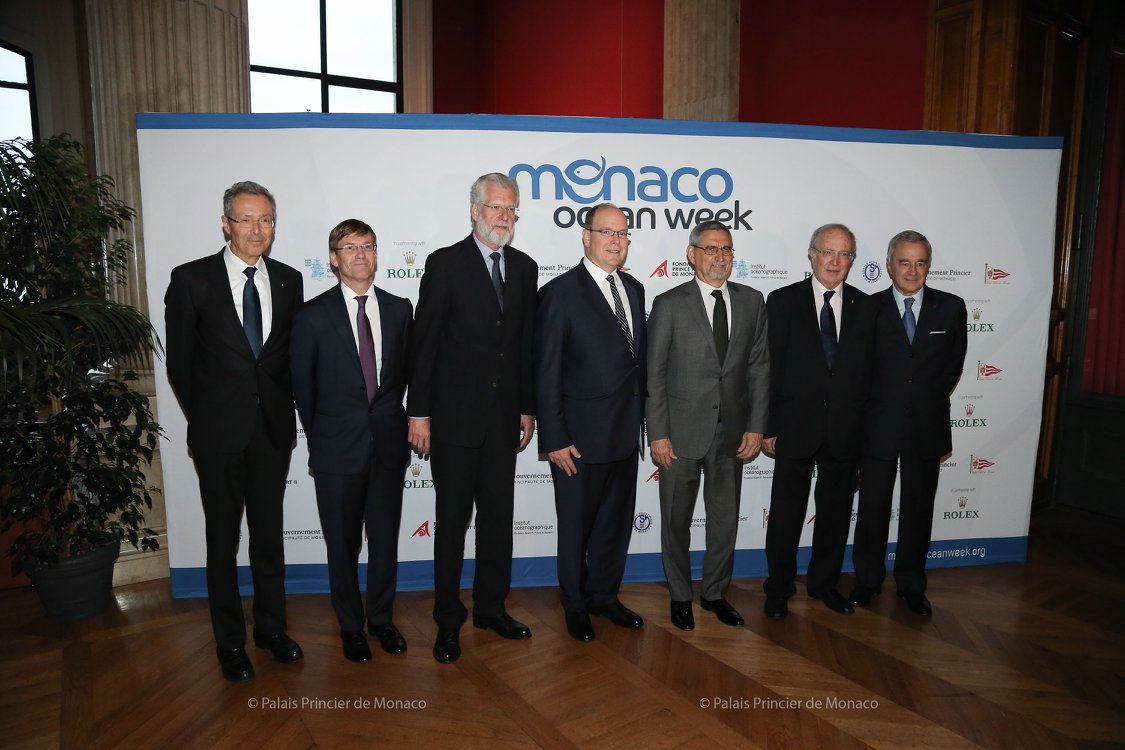September 15 – October 3, 2017
MISSION Cabo Verde 2017 – ATLANTIC
- Biodiversity, Cabo Verde, Insular fauna, Marine turtles, Megafauna, New exploration techniques, Reptiles
A large-scale mission
The second part of the operations carried out by Explorations de Monaco in Macaronesia during their first campaign, the mission to Cabo Verde took place from September 15 to October 3, 2017.
Conducted aboard the Yersin, it followed on from the Madeira 2017 mission.
Objectives
The various operations were coordinated by Pierre Gilles, head of the Macaronesia mission and project manager at the Ocean Policy Department of the Institut océanographique, Fondation Albert Ier, Prince of Monaco.
The mission mobilized some thirty participants.
It brought together several local teams, numerous scientists from different institutes, NGO leaders and representatives of government institutions.
Set in the regional context of Macaronesia, the program made it possible to study the archipelago’s biodiversity.
Numerous outreach activities also took place.
Their aim was to raise awareness of the richness and beauty of this environment, and to sensitize the general public and younger generations to the need to protect it.
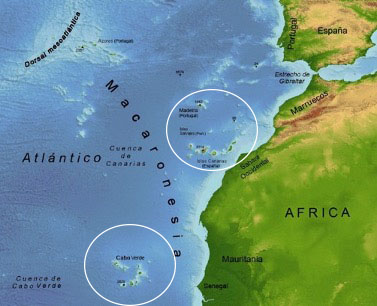
The mission in video
An expedition marked by the presence of HSH Prince Albert II of Monaco
The mission is part of the development of cooperation between Cabo Verde and Monaco.
Following the establishment of diplomatic relations in 2017 and the official visit of H.S.H. Prince Albert II of Monaco to Cabo Verde on the occasion of this mission, this cooperation was formalized in 2018 with the signing of a framework agreement between the two countries on the occasion of Monaco Ocean Week.
During his official visit from September 21 to 23, 2017, H.S.H. the Sovereign Prince, together with the President of the Republic of Cabo Verde, H.E. Mr. Jorge Carlos Fonseca, visited the Ocean Science Centre in Mindelo on São Vicente Island.
He then boarded the Yersin for a presentation of the work carried out and to observe the sea turtle research underway on the island of Boavista.
H.S.H. Prince Albert II of Monaco presents the President of the Republic of Cabo Verde, H.E.M. Jorge Carlos Fonseca, with one of the five specimens of giant skink from Islet Branco, collected in 1901 by Prince Albert I of Monaco © O.Borde-Explorations de Monaco.
Dr Björn Fiedler shows Prince Albert II of Monaco and Robert Calcagno how the "Wave Glider" robot works © O. Borde.
Explorations de Monaco.
H.S.H. Prince Albert II, surrounded by Mr. Jose Luis Santos, Mayor of Boa Vista, and Ms. Sónia Araujo, representative of the Cabo Verde government and coordinator of the national sea turtle conservation program, hand over the booklet on sea turtles to the children in the sea school © Olivier Borde - Explorations de Monaco.
Bottom Landers recovery ©F.
Buyle Explorations de Monaco
Highlights of the official visit of H.S.H. the Sovereign Prince
Donation of one of five giant skink specimens: a powerful symbol.
September 22, 2017: H.S.H. Prince Albert II officially handed over to the Republic of Cabo Verde one of the five specimens of the Cabo Verde giant skink, Chioninia coctei, collected by Prince Albert I on Islet Branco, in 1901.
This donation is particularly important as the giant skink is now an extinct species.
As Cabo Verde has never had the opportunity to conserve specimens of this species, this is the return to the site of an important genetic, scientific and cultural heritage.
This handover has led the President of Cabo Verde to envisage the creation of a National Natural History Museum, designed to raise awareness among the Caboverdian population of the archipelago’s remarkable biodiversity.
Giant skink specimen from the collections of the Oceanographic Museum of Monaco © M. Dagnino
The five giant skink specimens belonging to the Oceanographic Museum collections © Michel Dagnino - Institut océanographique, Fondation Albert Ier, Prince de Monaco
Cabo Verde, Branco islet.
Archive images.
Albert I Expedition, 1901 © Collections Musée océanographique de Monaco.
The OSCM visit
H.S.H. Prince Albert II of Monaco and President H.E.M. Jorge Carlos Fonseca visitedMindelo’s Ocean Science Centre (OSCM).
This research center is co-directed by the Cabo Verde Marine Institute and the German GEOMAR Helmholtz Centre for Ocean Research Kiel.
It is located in Mindelo, on the island of São Vincente, the archipelago’s second most populous island.
OSCM’s research focuses on environmental change, studying physical phenomena such as global warming, biogeochemical phenomena such as ocean acidification and deoxygenation, and ecological phenomena.
Human and social science projects are also being carried out, focusing on the impact of these changes on resource management.
Meet the scientists
H.S.H. Prince Albert II went to the Branco islet to retrieve the team that had disembarked 4 days earlier to study the reptiles present in this unexplored area.
During dinner aboard the Yersin, H.S.H. the Prince was given an update on the research being carried out by Dr. Raquel Vasconcelos of CIBIO-InBIO, University of Porto, Dr. Aurélien Miralles of the Muséum National d’Histoire Naturelle, Ms. Sónia Araújo-Lopes, Director of the Nature Conservation Department of Cabo Verde’s National Environment Directorate, and naturalist Mr. Kenny Delgado (local association Biosfera 1).
The next morning, still aboard the Yersin, GEOMAR researcher Dr. Börn Fiedler gave H.S.H. the Prince a presentation on the Wave Glider underwater robot, which is on board the Yersin and will be deployed at the end of the mission in Cabo Verde.
H.S.H. Prince Albert II and Mr. Robert Calcagno pick up Dr. Raquel Vasconcelos and Dr. Aurélien Miralles on Branco islet © O.Borde - Explorations de Monaco
H.S.H. Prince Albert II chats with Dr. Raquel Vasconcelos, on return from the Branco islet expedition © O.Borde - Explorations de Monaco.
Dr Björn Fiedler shows H.S.H. the Prince and Mr Calcagno how the "Wave Glider" robot works © O. Borde- Explorations de Monaco.
Support for mediation
Skype link H.S.H. Prince Albert II and Mr. Robert Calcagno live from the Yersin @M.
Dagnino Oceanographic Museum of Monaco
Live mediation action on the Yersin with students gathered at the Oceanographic Museum of Monaco ©M.
Dagnino Oceanographic Museum of Monaco
Preparing the live shot of the Yersin with Mr. Olivier Dufourneaud @M.
Dagnino Oceanographic Museum of Monaco
A presentation to the Sovereign on the theme of marine turtles at Cabo Verde on the Yersin.
©P.Gilles Explorations de Monaco
H.S.H. Prince Albert II of Monaco and Mr. Robert Calcagno live from Cabo Verde with 267 young Monegasques, connected from the large Conference Room of the Oceanographic Museum of Monaco.
Restitution to the Sovereign on September 22 of a working meeting of the "TAOLA" network group of experts, followed by a field visit to the Curral Velho site © O.Borde_MonacoExplorations
Direct from the OSCM with 267 Monegasque schoolchildren, connected from the large Conference Room of the Oceanographic Museum of Monaco.
For this exchange, 200 questions had been prepared by the Principality’s students!
Participation in a feedback and exchange workshop led by Dr Christophe Eizaguirre of London Queen Mary University.
The workshop brought together 15 leaders from 10 Cabo Verde non-governmental organizations and scientific institutions involved in marine turtle protection (TAOLA network).
Sónia Araújo-Lopes, coordinator of the national sea turtle conservation plan, was also present.
Visit to Curral Velho beach on the south-east side of Boavista island, home to numerous loggerhead turtle nests.
The research carried out by local teams aims to better understand the lives of sea turtles, to study their movements and behavior using different beacons, their metabolism and to determine the sex of turtles after they hatch.
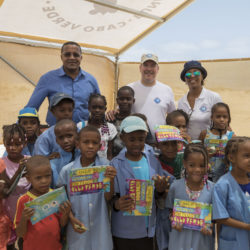
Booklet on sea turtles
An environmental education booklet in Portuguese was handed out to children on the occasion of the Prince’s visit.
1400 copies were reprinted with the contribution of Explorations de Monaco.
This booklet is distributed with the kind permission of Associaçao programa Tatô (marine turtle conservation and sustainable management of natural marine and coastal resources in Portugal and São-Tomé), ATM-Tartarugas a Salvo; Fundação Maio Biodiversidade; Queen Mary London University of London, and with the financial support of Explorations de Monaco.
Text ©Mrs Sara Viera.
Illustrations ©M.
Victor Jimenez.
Cabo Verde
Located off the coast of Senegal in the Atlantic Ocean, Cabo Verde is an archipelago state made up of ten volcanic islands and eight islets belonging to Macaronesia*.
With almost 700,000 km2 under national jurisdiction, the Cabo Verde archipelago is home to many rich underwater ecosystems, but little is known about them due to a lack of resources at sea and the remoteness of the sites.
The capital of Cabo Verde, Praia, is located on the largest island, Santiago.
The highest point in Cabo Verde is 2829 meters (Pico do Fogo).
*Macaronesia comprises five archipelagos: the Azores, Selvagens and Madeira, under Portuguese sovereignty; the Canary Islands, under Spanish sovereignty; and the Cabo Verde Islands, an independent republic since 1975.
Science in the spotlight
Several scientific projects were carried out from September 15 to October 2, 2017.
- Recovery of a “Bottom Lander” underwater robot from the Senghor Seamount on September 15 and redeployment off Santa Luzia Island on September 16;
- Deployment of another “Wave Glider” robot on October 2;
- Study of the herpetofauna of the Branco islet, from September 17 to 21;
- Study of the underwater biodiversity of Cabo Verde by deploying underwater cameras (videoplots) on September 17;
- Focus on sea turtles: reconnaissance of various sites from September 16 to 19, meeting of the “TAOLA” network group of experts on September 21, report to the Sovereign on September 22, followed by a visit to the Curral Velho site on the south-east of Boavista Island; financing of beacons to study sea turtle behavior; financing of the reissue of an educational booklet on sea turtles;
- Survey of megafauna (sharks and manta rays) in Cabo Verde, from September 25 to October 1.
- Distribution of 500 leaflets on the herpetofauna of the Desertas – Santa Luzia, Branco and Raso islands throughout the mission.
Underwater robots
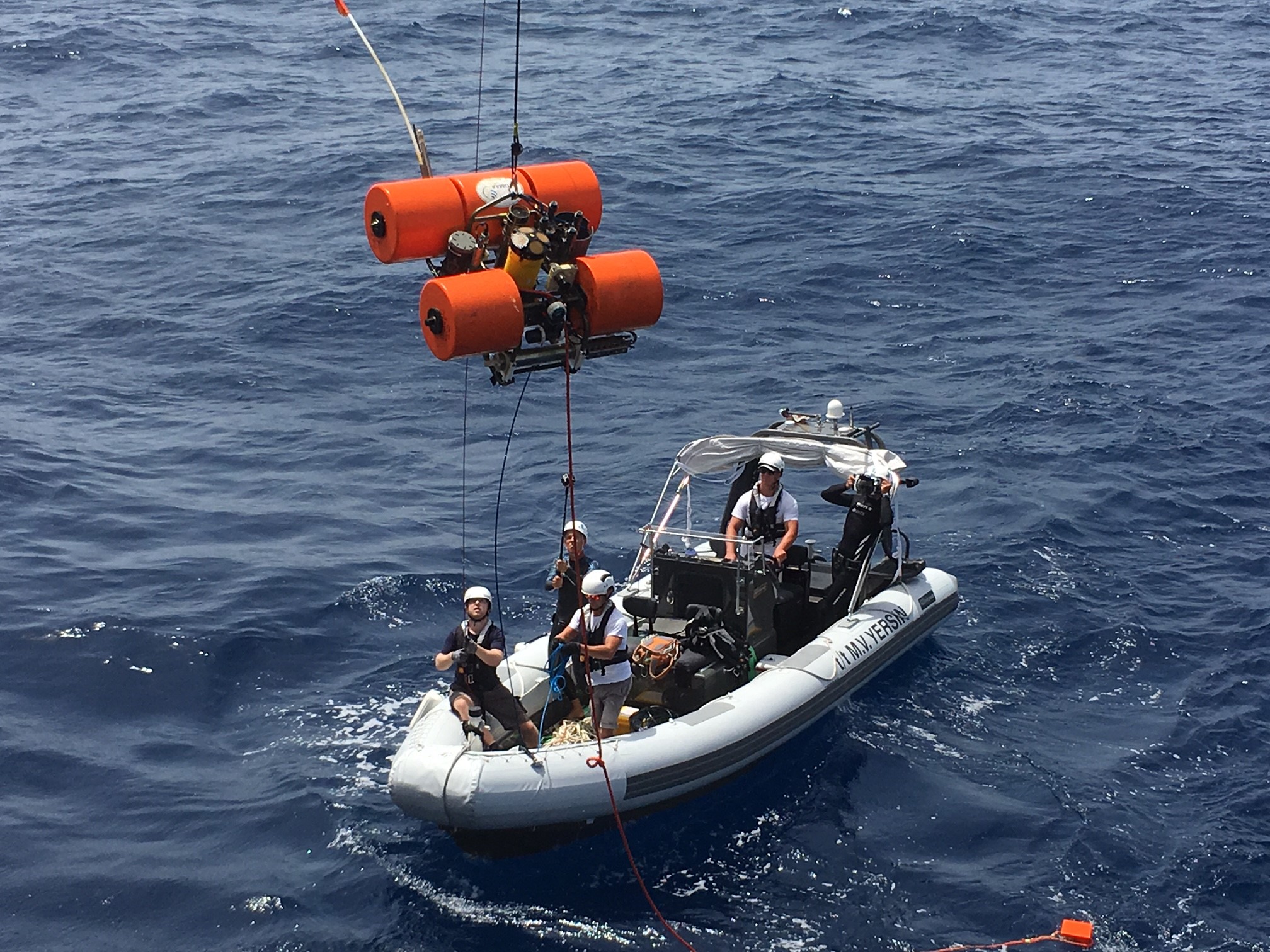
Bottom Lander
The first operation involved retrieving a Bottom Lander from a seamount, the Senghor Seamount, on September 15, 2017, at a depth of 112 meters.
This 300 kg static robot was submerged on the top of this seamount and enabled the measurement of a series of hydrographic and biogeochemical data (temperature, salinity, pressure, oxygen content, fluorescence, turbidity, current sensors, etc.) for six months.
Scientists were able to retrieve the recordings for analysis before redeploying it the following day off Santa Luzia Island.
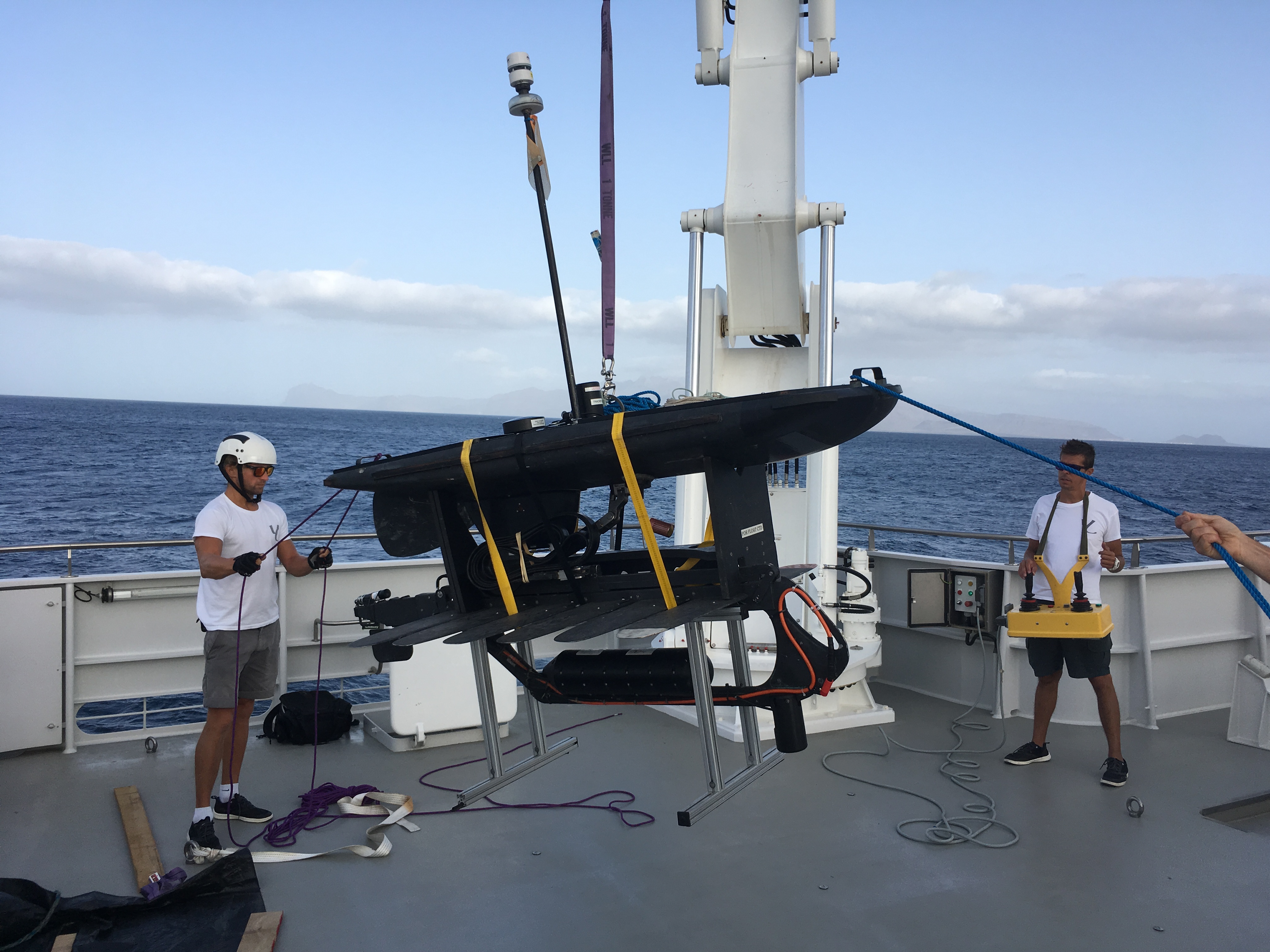
Wave Glider
The second operation involved the deployment of Geomar’s Wave Glider off the coast of Santa Luzia on October 2.
The Wave Glider is an autonomous surface vehicle propelled by wave energy (up to 1.5 knots) and powered by solar panels.
Once deployed, it can be controlled by satellite communications via a web portal.
Data can be consulted in real time, and the glider’s course can be altered at any time.
The Wave Glider is capable of missions of up to two months in unattended mode.
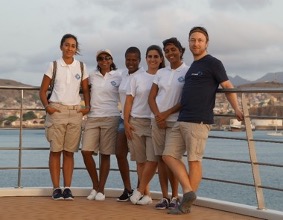
A crack team
The team involved in these operations included Dr Björn Fiedler,(Geomar Helmholtz-Centre for Ocean Research Kiel), Ms Luciana Génio, (Centro de Estudos do Ambiente e do Mar, Departamento de Biologia, Universidade de Aveiro), Ms Jessica Cibelle Fonseca de Matos(Universidade de Cabo Verde), Ms Corrine Almeida, (Universidade de Cabo Verde – Faculdade de Engenharias e Ciências do Mar), and finally Ms Silvana Monteiro Roque (Government of Cabo Verde).
Zoom in on the Wave Glider
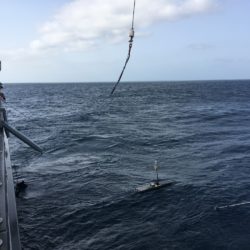
The Wave Glider has many scientific applications, such as serving as a weather station.
Like the Bottom Lander, the robot is fitted with numerous sensors (carbon dioxide, oxygen and nitrogen sensors, fluorescence, turbidity, temperature and salinity, etc.).
It also features a fish echosounder, a camera and an acoustic receiver for tagged animals.
All these measurements enable us to study gas exchanges between the air and the sea, map the spatial distribution of biomass (fish and zooplankton) in the upper 100 m of the water column, observe variations in the diurnal vertical migration of zooplankton and monitor the abundance of tagged species (e.g. sharks) in certain areas.
Study of the herpetofauna of the Branco islet
Islet Branco is located 40 nautical miles from Mindelo.
Classified as a protected area, it is a veritable sanctuary for wildlife (seabirds, marine turtles, reptiles, plants and invertebrates).
This islet was once home to the giant skink of Cabo Verde.
Operations on Branco are extremely difficult, as it is an isolated and inhospitable islet.
Access is complicated and dangerous (no harbor or sheltered areas, rocky coastline).
Few researchers obtain permission to work there.
Branco’s ties with the Principality of Monaco go back a long way.
Prince Albert I of Monaco, through his long friendship with the King of Portugal Don Carlos I (see ” Souverains océanographes “, documents collected and commented by Jacqueline Carpine-Lance and Luiz Vieira Caldas Saldanha, 1992), undertook an expedition to Macaronesia and brought back samples of endemic species, including the giant skink.
Dr. Raquel Vasconcelos’ two main objectives were to detect the possible presence of the giant skink Chioninia coctei and to study the other reptiles present on the island, including the giant gecko Tarentola gigas brancoensis, in particular their diet and their place in the trophic chain.
The scientists stayed on the islet for four days and three nights, during which they were able to :
- reference three reptile species Tarentola raziana, Tarentola gigas brancoensis, Chioninia stangeri. No signs of past or present presence of Chioninia coctei could be detected,
- deploy 9 self-triggering cameras and collect samples (reptiles, arthropods, plants),
- observe the egg-laying of a large female loggerhead turtle, confirming that sea turtles lay eggs at this site,
- identify twelve plant species: Zygophyllum, Polycarpaea nivea, Zygophyllum simplex, Graminea Sporobolus, Euphorbia forskaolii, Frankenia ericifolia caboverdeana, Fagonia cretica, Calotropis procera, Sueda vermiculata, Tribulus cistoides, Aizoon canariense, Forsskaolea procridifolia.
Participants in the field operation were: Dr. Raquel Vasconcelos (CIBIO-InBIO, University of Porto), Dr. Aurélien Miralles (MNHN, Paris), Mr. Kenny Delgado (NGO Biosfera, Mindelo, Cabo Verde), Ms. Sónia Araújo-Lopes, Ministry of the Environment, representative of the Cabo Verde Government and coordinator of the Cabo Verde sea turtle program, an EDM team comprising Mr.Robert Calcagno and Mr. Pierre Frolla, Lieutenant-Colonel Philippe Rebaudengo, Mr. Olivier Borde, a team of journalists, Mr. Augusto da Cruz and Mr. Daniel Cruz.Robert Calcagno and Pierre Frolla, Lieutenant-Colonel Philippe Rebaudengo, Olivier Borde, a team of journalists, Augusto da Cruz and Daniel Cruz (fishermen from Salamansa, SãoVicente) recruited as local guides.
Landing of the Explorations de Monaco team on Branco islet, Cabo Verde 2017 © O.Borde- Explorations de Monaco
Mr. Robert
Robert Calcagno, Dr. Raquel Vasconcelos and Mr. Kenny Delgado
Dr. Robert Calcagno, Dr. Raquel Vasconcelos and Mr. Kenny Delgado examine the herpetofauna of the Branco islet.
Olivier Borde.
Monaco Explorations.
Dr. Raquel Vasconcelos
Raquel Vasconcelos sets up her photographic equipment for reptile monitoring on the Branco islet ©Olivier Borde- Explorations de Monaco.
The giant gecko, Tarentola gigas brancoensis, endemic to the Branco islet, photographed here at night ©Aurélien Miralles-Explorations de Monaco.
Reptile study, tracking.
Islet Branco, Cabo Verde 2017 © Aurélien Miralles.
Explorations de Monaco.
R. Vasconcelos on Branco islet.
Cabo Verde 2017 © Aurélien Miralles- Explorations de Monaco.
Study of reptiles and differentiation between species.
Cabo Verde 2017 © Aurélien Miralles- Explorations de Monaco.
Identification of plant species on the Branco islet, Mission Cabo Verde 2017 © Aurélien Miralles.
Monaco Explorations.
Field operation on the Branco islet.
Cabo Verde 2017.
From left to right: T. Apparu, A. Miralles, R.Vasconcelos, F. Schnoller, K. Delgado, R. Calcagno © O.Borde- Explorations de Monaco.
Islet Branco, Cabo Verde 2017.
Mr. Augusto da Cruz and Mr. Daniel Cruz, fishermen from the town of Salamansa, Sao Vicente, prepare the meal ©Aurélien Miralles- Explorations de Monaco.
Explorations de Monaco camp on Branco islet.
Cabo Verde 2017 ©Aurelien Miralles- Explorations de Monaco.
1901.
Débarquement sur l'îlot Branco.
A l'arrière-plan, la Princesse Alice II, navire du Prince Albert Ier de Monaco © Collections du Musée océanographique de Monaco.
Photograph taken in 1901 during Prince Albert I 's visit to Branco islet © Collections du Musée océanographique de Monaco
Ongoing research
The work carried out on the Branco islet enabled Dr. Raquel Vasconcelos to supervise a Master’s student, Miss Catarina Pinho, on further research into the herpetofauna of Cabo Verde.
The latter, in view of the quality of her work, has been awarded a grant in August 2019 to carry out a thesis on this subject by the Fundação para a Ciência e Tecnologia.
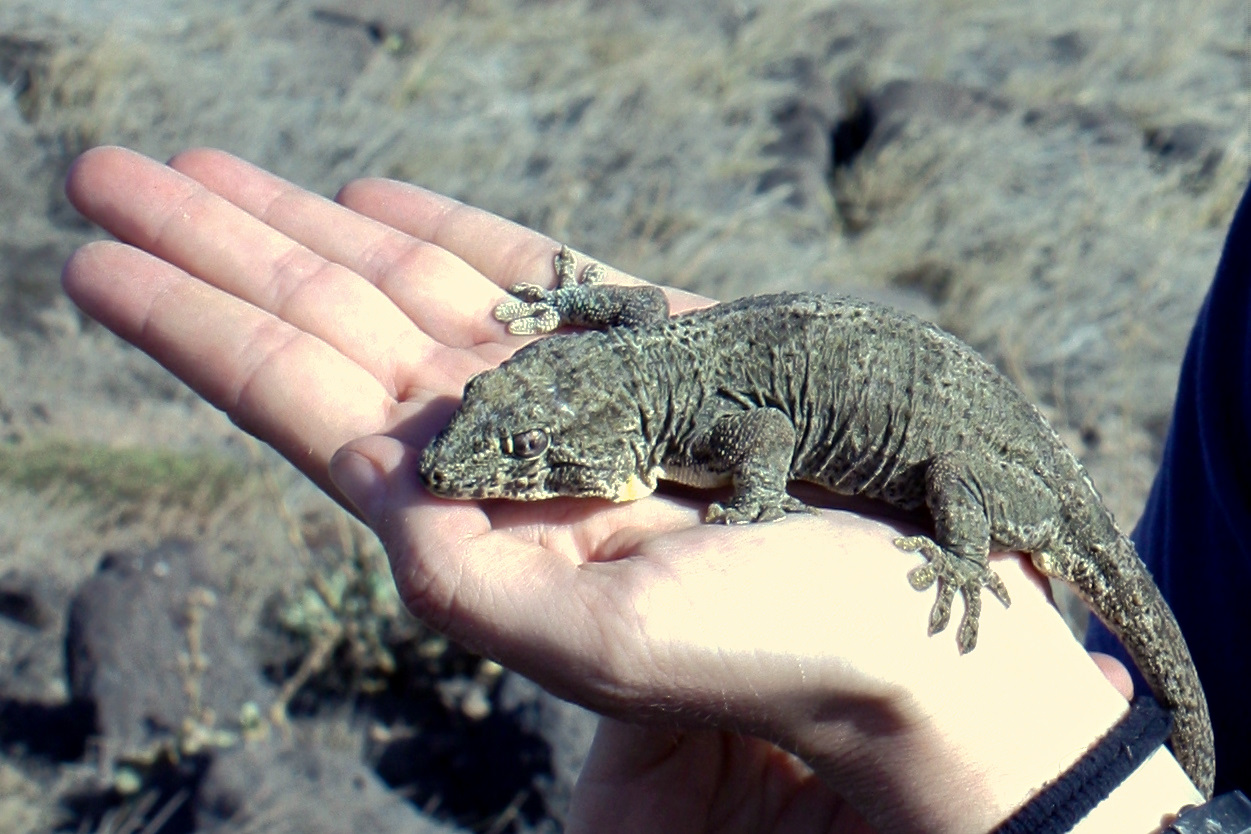
Cabo Verde marine biodiversity
During the mission, an image-taking technique was used to study the biodiversity of shallow waters below 20m.
The technique consists of deploying cameras mounted on stands and letting them take images without any human presence. Mr. Rui Freitas (University of Cabo Verde), in charge of the project, tested the technique twice at two different sites.
These two trials validated the concept, which will subsequently be reproduced on a routine basis, as part of a long-standing project.
Placed in study areas and operating according to a precise protocol, these cameras record underwater images of the fauna.
Thanks to this system, an inventory of biodiversity (specific diversity, biomass) can be drawn up, and the natural behavior of species can be studied without biased measurements due to the presence of divers.
The presence of new species can thus be detected, and the behavior of the fauna provides an indicator of anthropogenic impact (particularly due to fishing).
This process enables us to compare different sites and understand their dynamics.
Sea turtles
The Cabo Verde archipelago is the3rd most important site in the world for the reproduction of the loggerhead sea turtle, Caretta caretta, in particular the beaches of Boa Vista, which host around 65% of the clutches in Cabo Verde.
Rapidly expanding tourist activities and poaching, unfortunately still practiced, are the main threats to these fragile populations.
The fight against poaching (beach surveillance), raising public awareness and involving local communities, by converting local fishermen into nature guides who earn an income from this new activity, are the keys to protecting and conserving sea turtles in Cabo Verde.
This is one of the roles of the Fundação Tartaruga (Sea Turtle Foundation)
The objectives of the Monaco Explorations were to :
- support the Sea Turtle Foundation’s sea turtle study program by enabling it to acquire new beacons for tracking sea turtles,
- support the “TAOLA” network, which brings together NGOs and other players on the archipelago’s 10 islands,
- raise the profile of sea turtles in Cabo Verde by involving political decision-makers such as the Mayor of Boavista.
Participants included the Fundação Tartaruga Sea team, Dr. Hiltrud Cordes, CEO of the Sea Turtle Foundation (Germany), Dr. Christophe Eizaguirre(Queen Mary London University), Ms. Joana Nicolau and Mr. Euclides Resende (Fundação Tartaruga, Sea Turtle Foundation branch on the island of Boa Vista) and Ms. Sónia Araújo-Lopes.
Caouannes turtle nursery enclosure on Boa Vista beach © Pierre Gilles.
Explorations de Monaco.
Juvenile loggerhead turtles on Boa Vista beach © Pierre Gilles.
Explorations de Monaco.
Megafauna study
The seamounts and shoals characteristic of Cabo Verde’s waters are home to a rich megafauna, in particular rays, including manta rays, and numerous sharks, notably whale sharks and tiger sharks.
These fish, little studied for lack of resources at sea, are heavily impacted by intensive fishing.
-
2 teams involved
- the MarAlliance NGO team,
- Professor David Mouillot’s team (UMR Marbec – University of Montpellier)
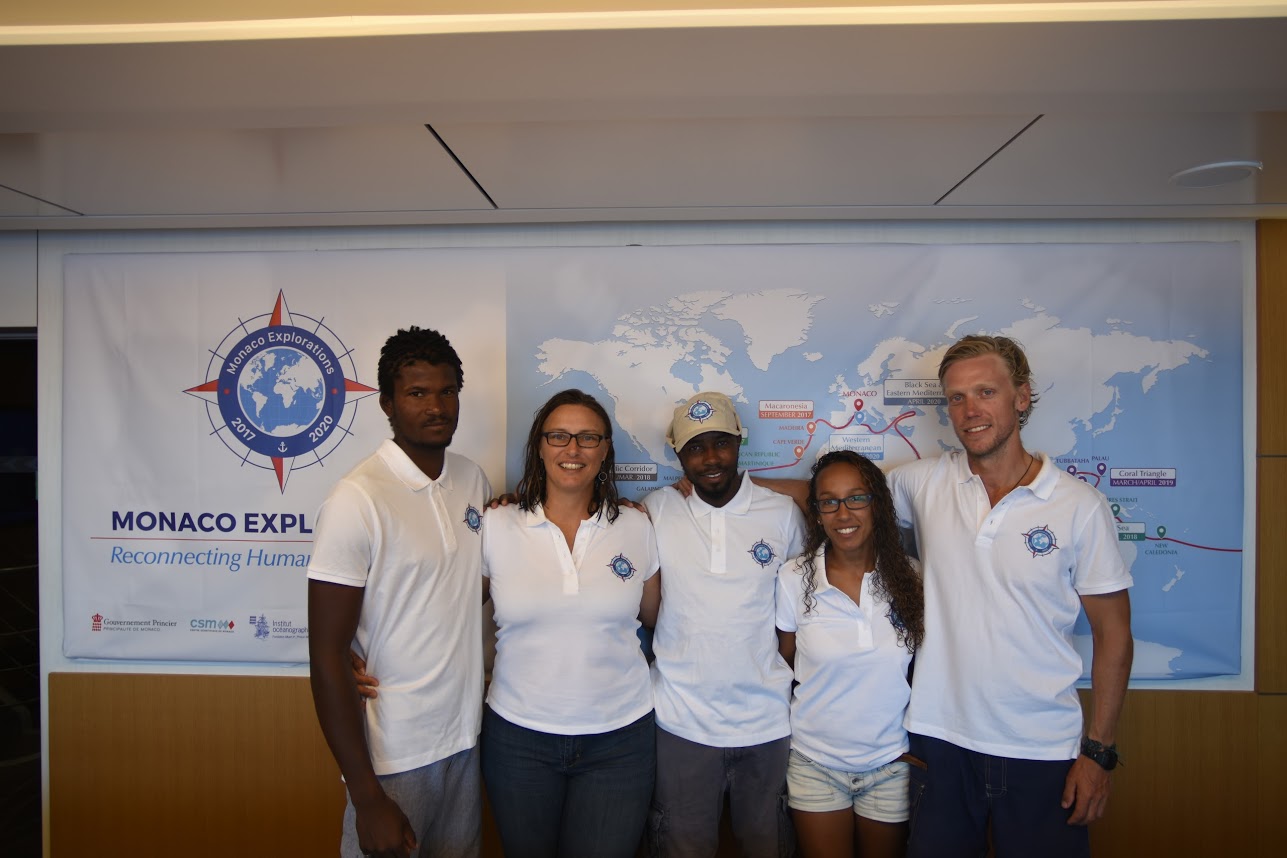
“How fragile we are” in memory of Zeddy Seymour, with thanks to the EDM for a great time in the field
A tracking beacon is attached to the dorsal fin of a female tiger shark south of Boa Vista.
MarAlliance.
Monaco Explorations
Whale shark ©R.Graham, Maralliance
MarAlliance
MarAlliance has several bases in Cabo Verde, Honduras, Micronesia and Panama.
Teams carry out research on sharks and manta rays, tracking animal migration using satellite tracking and bottom-baited camera observations.
A permanent group is based on the small island of Boavista, in Sal Rei.
- the team placed two Spot 6-type beacons on Manta birostris manta rays ;
- Study of a 2.5 m babosse shark, Carcharhinus altimus , and a 3.55 m tiger shark, Galeocerdo cuvieri .
- Placement of a beacon on a whale shark, Ryncodon typus, a 5-metre-long female that will be tagged in the process, filmed and photographed.
A year after these operations, MarAlliance was able to pinpoint the path of the female tiger shark that had been tagged at the time.
It turns out that she migrated off the Brazilian coast before returning to Cabo Verde.
Details of the route here.
Pr Mouillot's team
The team led by Professor Mouillot was able to deploy a system of underwater cameras baited multiple times in what were often difficult sea conditions.
The videos recorded confirmed the presence of deep-sea predators – hammerhead sharks, dolphinfish, king mackerel and marlin – but their presence was small and discreet.
Dr Tom Letessier (Institute of Zoology, Zoological Society of London), Dr Jonathan Grondin-Leconte-Demarsy (Spygen), Ms Virginie Marques and Dr Clara Péron (Université de Montpellier - MARBEC) © O.Borde - Explorations de Monaco.
Scalloped hammerhead shark, Sphyrna lewini.
Many species approach the baited cameras deployed on the subsurface.
Tom Letessier-Explorations de Monaco.
A black king mackerel, Acanthocybium solandri, in the eye of the baited cameras ©Tom Letessier-Explorations de Monaco.
Dolphinfish or mahi-mahi, Coryphaena hippurus, another open-water predator ©Tom Letessier Monaco Exploration
Marlin or marlin, Istiophorus sp. in open water.
Not to be confused with swordfish ©Tom Letessier- Explorations de Monaco.
Preparing the BRUVs on deck, at night, for deployment the following day ©C.
Péron Explorations de Monaco
BRUVs preparations ©T.
Letessier Explorations de Monaco
Deployment of BRUVs ©P.
Gilles Explorations de Monaco
An exhibition and 2 virtual reality films from the mission
A photographic exhibition of 24 images was produced and inaugurated at the Monaco Oceanographic Museum following the Monaco Explorations campaign in Macaronesia.
This exhibition is available for touring.
In conjunction with the Monaco Oceanographic Museum’s Animations department, two short films have been made using 360° footage shot by Fabrice Schnoller.
Entitled “A la rencontre du phoque moine” and “Le mystère des lézards géants”, these two films are now available to visitors to the Museum.
A set of viewing headsets has also been acquired for use on tour.
Thanks
The Principality of Monaco would like to extend its warmest thanks to :
- the Republic of Cabo Verde, in particular H.E. Mr. Jorge Carlos Fonseca, President of the Republic of Cabo Verde,
- Gilberto Correia Carvalho Silva, Minister for Agriculture and the Environment, and his teams, including Sónia Araújo-Lopes and Silvana Monteiro-Roque,
- José da Silva Gonçalves, Minister for the Economy and Employment
- The entire Government of the Republic of Cabo Verde, H.E. Mr. José Luís Fialho Rocha, Permanent Representative to the United Nations, Mrs. Jeanne Brito Salhab, Embassy of the Republic of Cabo Verde in France, Mr. Carlos Ferreira Santos, Honorary Consul of Germany in the Republic of Cabo Verde, Mr. José Luís Santos, Mayor of Boavista and all the official entities that made this mission possible and enabled fruitful exchanges between the two countries, on the diplomatic, scientific and cultural levels.
-
Prof. Peter Herzig, Ms. Cordula Zenk and Dr. Björn Fiedler of Geomar Helmholtz Centre for Ocean Research, Dr. Osvaldina Silva and Mr. Nuno Vieira of Instituto Nacional de Desenvolvimento das Pescas, Prof. Astrigilda Silveira, Dr. António Carlos Varela and Dr. Björn Fiedler of Geomar Helmholtz Centre for Ocean Research. Mr. Rui Freitas University of Cabo Verde, Dr Christophe Eizaguirre, Queen Mary University of London, Dr Hiltrud Cordes, Mr Euclides Resende, Ms Joana Nicolau, Mr Senior Cruz, Turtle Foundation, Dr Raquel Vasconcelos, CIBIO-InBIO, University of Porto, Dr Aurélien Miralles, Museum of Natural History, Paris, Mr Kenny Delgado, field assistant, Mr Augusto da Cruz and Mr Daniel Cruz, fishermen and local guides, Salamansa.
